An allergic rash on the arms and legs in an adult is a very common phenomenon. Such skin reactions are characteristic, first of all, of children, which is due to the immaturity of the immune system and the characteristics of the growing organism. More often, rashes occur as a result of the use of food allergens, less often a rash appears due to exposure to an irritant on the skin.
The reasons
Allergies on the hands and feet occur in response to the impact on the human body of internal or external stimuli. You can determine the cause of its occurrence by the type and location of the rash:
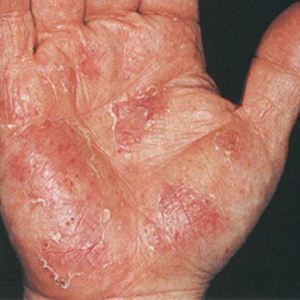
Contact dermatitis is a local skin reaction to exposure to harsh chemicals (household chemicals and substances that a person comes into contact with at work). In this case, the upper layers of the skin are damaged, but there is no reaction from the immune system.
Allergic dermatitis usually manifests itself as a result of repeated prolonged contact with an irritant. His picture is typical: the limbs are hyperemic and edematous, over time, blisters with a clear liquid form on the fingers and skin of the legs, merging into large areas of the lesion. As a result of mechanical impact, they burst and become covered with crusts.
The pathological process is accompanied by discomfort, burning and severe itching. With constant contact with the allergen, the disease becomes chronic, while the skin thickens and flakes. Waxy, scaly patches on the elbows are not related to allergies and most often represent psoriasis. 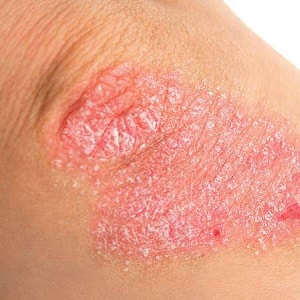
Symptoms
Atopic dermatitis is a common skin disease associated with hypersensitivity of the skin to certain irritants. The reaction usually manifests itself in the following symptoms:
- rash of a different nature;
- hyperemia;
- blisters or patches on the skin;
- severe swelling and itching.
A combination of two or more signs is characteristic (for example, bright red, itchy blisters). In the photo below, you can see the rash that appears with allergies on the hands of adults. 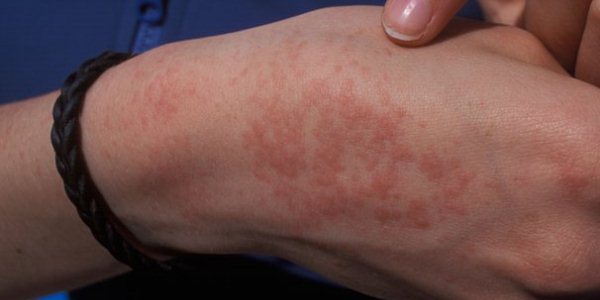
Diagnostics
At the first manifestation of atopic dermatitis, the patient is recommended to visit an allergist or dermatologist to confirm or remove a preliminary diagnosis.
For this purpose, specific tests are carried out to clarify the allergen (elimination test, skin and provocative tests).
Treatment
The level of development of medicine allows you to determine the sensitivity to most known allergens. This gives the patient the opportunity to avoid contact with substances and food that are hostile to his body. To create a balanced diet that excludes prohibited foods, it is advisable to consult a nutritionist.
If it is proved that an allergic rash is caused by temperature exposure, then in case of a cold snap, hands must be reliably protected with creams and gloves. And in the hot season, people suffering from photosensitivity need to apply protective equipment to their skin, wear clothes and a hat that protect against aggressive sunlight.
Traditional
Treatment of allergic dermatitis of the extremities is based on eliminating the cause of irritation and alleviating the symptoms of the disease.
The basis of pharmacotherapy for allergies is the appointment of antihistamines that block the release of inflammatory mediators. This allows you to quickly remove swelling, normalize blood circulation and reduce the severity of itching in case of allergies.
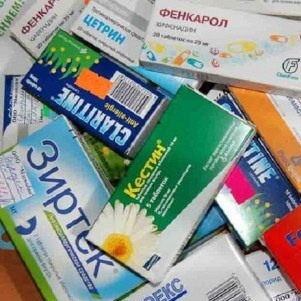 Antihistamines are taken orally in tablet form (Suprastin, Claritin, Cetrin, Tavegil). In a severe form of the disease, it is possible to prescribe hormonal drugs (Flucinar, Celestoderm, Fluorocort, Hydrocortisone ointment). Corticosteroids quickly eliminate inflammatory changes and quickly normalize the state of tissues, but they have many side effects.
Antihistamines are taken orally in tablet form (Suprastin, Claritin, Cetrin, Tavegil). In a severe form of the disease, it is possible to prescribe hormonal drugs (Flucinar, Celestoderm, Fluorocort, Hydrocortisone ointment). Corticosteroids quickly eliminate inflammatory changes and quickly normalize the state of tissues, but they have many side effects.
To avoid secondary infection, prescribe antiseptics that prevent the reproduction of pathogenic flora. And if the infection has already affected the affected area, antibacterial agents should be used (Miramistin, Levomekol, Lincomycin or Gentamicin ointment). The foot allergy shown in the photo below can be complicated by a fungal infection. In this case, antifungal drugs are prescribed (Lamisil, Lamikon). 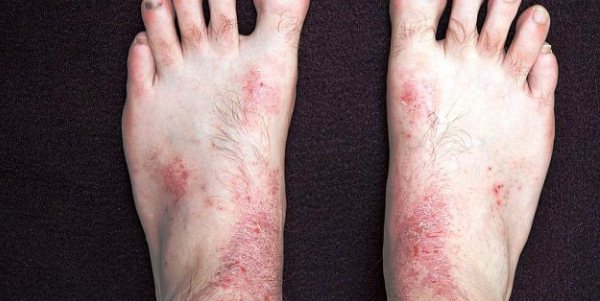
In atopic dermatitis of the skin of the hands, along with antihistamines, corticosteroids and sedatives, specific immunotherapy is prescribed. As a local treatment is used:
- Videstim;
- Burov's liquid;
- zinc paste;
- Fenistil gel;
- Ichthyol ointment.
Means that improve tissue trophism are shown:
- Panthenol;
- Radevit;
- Solcoseryl;
- Actovegin.
For actinic dermatitis caused by ultraviolet radiation, corticosteroid creams and cooling compresses are used.
Alternative medicine
Herbal treatment should be carried out with the permission and under the supervision of the attending physician, and should only be used as an adjunct to the main drug therapy.
The initial stage of allergic dermatitis responds well to herbal remedies without the use of pharmaceutical preparations.
Drug options for allergic dermatitis:
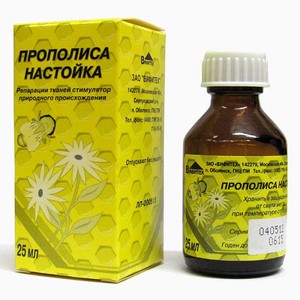
It is necessary to use folk remedies very carefully so as not to provoke a deterioration in the condition. Before treatment, it is necessary to make a test on a small area of \u200b\u200bthe skin.

